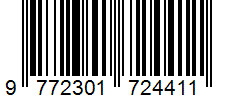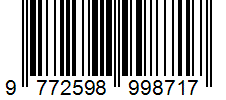ANALYSIS OF THE BLUE OCEAN STRATEGY ENGINEERING APPROACH TO INCREASE SALES IN BUSINESS COMPETITION (CASE TUDI ATAMATI COFFEE BATAM)
Abstract
The development of Coffee shops in Indonesia is still faced with various problems, causing its competitiveness to be weak. One of these problems is the need for the right strategy to be applied by business actors to increase competitiveness.
This study intends to provide advice to entrepreneurs, namely to be able to use the Blue Ocean Strategy as a search method. Blue Ocean Strategy is a strategy or way to conquer competitors through various innovative product offerings. Because the focus of this research is how to design a proposal for the development of observe Coffee using the Blue Ocean Strategy method.
Based on the results of the study, it can be concluded, through the EFAS and IFAS Matrix, the company can find out the position of the company which is currently in quadrant III, which means that there is a need for a change in strategy. Strategies needed Observing Coffee where there are three strategies proposed, the first is a beginner barista school, the second adds to the history of Coffee variants and the third provides a taste table.
Keywords
Full Text:
PDFReferences
Affif, Faisal, (2012), “Blue Ocean Strategy and Creative Economy”, Cluster I Column Series, Jakarta: Binus University.
ASMARA, DI (2021). Business Strategy Implementation Design With Blue Ocean Strategy Approach (Case Study of Siomay Kang Indra).
Central Bureau of Statistics. 2018. Number of Micro and Small Industry Companies by Province 2013-2015. (Retrified fromhttps://www.bps.go.id/linkTableDinamis/view/id/1004 /15-02-2018)
David, Fred R. (2006). Strategic Management Concepts & Cases 9th ed. New Jersey:Prentice Hall
Giles, J., & William, C. (2000). Export-led growth: A survey of the empirical literature and some non-causality results (Econometrics Working Paper No. 9901). Victoria, BC: University of Victoria.
Grant, Robert M. (1999). Strategy analysis: contemporary. Concepts, techniques, applications. Jakarta: Erlangga.
Ghose, AK, Majid, N., & Ernst, C. (2008). The global employment challenge. Academic Foundation.
Hamdani, M. (2018). Analysis of the Implementation of Red Ocean Strategy and Blue Ocean Strategy Using the Erase-Reduce-Increase-Create Scheme, Strategy Canvas and Blue Ocean Index at Coffee Shops in Medan.
Hamsani, H., & Valeriani, D. (2014). BLUE OCEAN TOURISM DEVELOPMENT STRATEGY IN BANGKA BELITUNG ISLANDS PROVINCE. Journal of Economics, Accounting and Management, 13(2).
Hermawan, Aj and Rachel Jessica Pravitasari. 2013. Business Model Canvas. (Retrified from accelerated.id/media/Materi_13_-
Ikhwan, R. (2018). Analysis of Strategic Design With Blue Ocean Strategy Approach To Increase Sales In Business Competition (Case Study at Nongkring Coffee Shop).
Ismail, A. (2016). Analysis of Strategic Design With a Blue Ocean Strategy Approach in an Effort to Win Business Competition (Doctoral dissertation, Indonesian Islamic University).
Joewono, Handito, Hadi. (2005). “7 In 1” Business Competition Strategy, Print First. Jakarta: Indonesian daily.
Kim, Chan W. & Mauborgne, Renee. (2005). ValueInnovation : A Leap Into The BlueOcean.Retrieved December 1, 2016
Kim, W Chan and Renée Mauborgne. (2005). Blue Ocean Strategy Create a Market Space Without Competitors and Leave Competition No Longer Relevant. PT. Serambi Ilmu Semesta. Jakarta
Kotler, BP (1997). Patch use by gerbils in a risky environment: manipulating food and safety to test four models. Oikos, 274-282.
Kosasih, MC (2014). Formulation of Blue Ocean Strategy as a competitive strategy in CV family companies. Eternal Gamma. Agora, 2(1), 424-432.
Labuda, SE (2016). Development Strategy of Sharia Accommodation Services With Blue Ocean Strategy Approach (Case Study on Hasanah Guest House Malang). FEB Student Scientific Journal, 3(2).
Lasher, R Lemuel (2004). Blue Ocean Strategy. CSC World. New York
Majid, M., Kameel Mydin Meera, A., & Azmi Omar, M. (2008). Inter dependence of ASEAN-5 stock markets from the US and Japan. Global Economic Review, 37(2), 2001-225.
Marrus. (2002). Strategic Management Research Design. Jakarta: Rajawali Press.
Moleong, LJ (2011). Qualitative Research Methodology (revised edition). Bandung: PT. Ros dakarya teenager.
Pride, William M. and Victoria. C. Ferrell. (1995). Marketing: Theory and Everyday Practice. Volume 1 translation by Daniel Wirajaya. Jakarta: Erlangga.
Quinn, RE (1999). “Organizational development and change” Annual Review of Psychology, Vol. 50: 361-386.
Rangkuti, Freddy. (2006). SWOT Analysis Techniques for Dissecting Business Cases: Reorientation of Strategic Planning Concepts to Face the 21st Century, PT Gramedia Pustaka Utama, Jakarta.
Samrin, S., & Irawan, I. (2021). Blue Ocean Strategy Formulation: A Case Study of Gayo Coffee in Takengon Regency. Journal of AKMAMI (Economic Management Accounting), 2(2), 410-420.
Samrin, S., Irawan, M., & Se, M. (2019). Analysis of Blue Ocean Strategy for the Handicraft Industry in Tanjung Balai City. Journal of Management, 11(1), 93-100.
Supriono, B. (2015). Strategic Planning With Blue Ocean Strategy Approach at Caferesto Omah Iwak Malang (Doctoral dissertation, Universitas Brawijaya).
Wheelen, TL, & Hunger, JD (2006). Strategic management and business policy: concepts and cases. Pearson Prentice Hall.
DOI: https://doi.org/10.33373/profis.v10i2.4598
Refbacks
- There are currently no refbacks.

This work is licensed under a Creative Commons Attribution-NonCommercial-NoDerivatives 4.0 International License.
E-ISSN 2598-9987
This work is licensed under a Creative Commons Attribution-ShareAlike 4.0 International License.
PROFISIENSI: Jurnal Program Studi Teknik Industri
Building A, 1st Floor, Faculty of Engineering, University of Riau Kepulauan
Jl. Pahlawan No.99, Batu Aji, Batam, Kepulauan Riau
Email: Profisiensi@journal.unrika.ac.id





